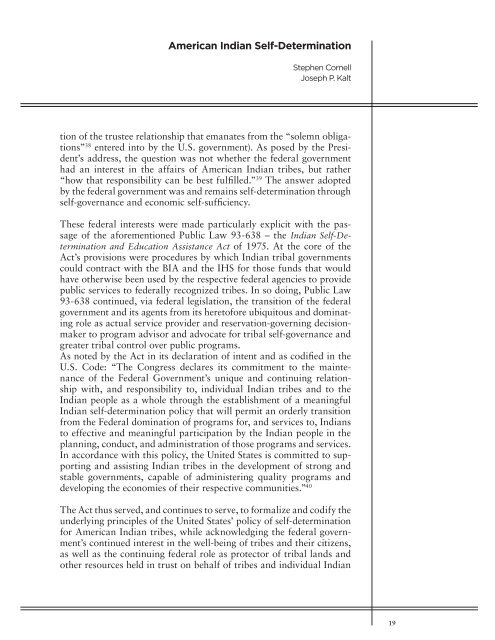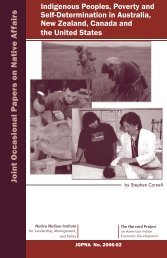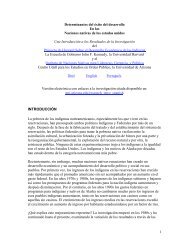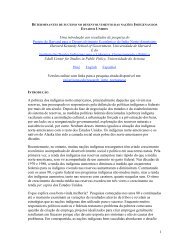American Indian Self-Determination - Native Nations Institute ...
American Indian Self-Determination - Native Nations Institute ...
American Indian Self-Determination - Native Nations Institute ...
- No tags were found...
You also want an ePaper? Increase the reach of your titles
YUMPU automatically turns print PDFs into web optimized ePapers that Google loves.
<strong>American</strong> <strong>Indian</strong> <strong>Self</strong>-<strong>Determination</strong>Stephen CornellJoseph P. Kalttion of the trustee relationship that emanates from the “solemn obligations”38 entered into by the U.S. government). As posed by the President’saddress, the question was not whether the federal governmenthad an interest in the affairs of <strong>American</strong> <strong>Indian</strong> tribes, but rather“how that responsibility can be best fulfilled.” 39 The answer adoptedby the federal government was and remains self-determination throughself-governance and economic self-sufficiency.These federal interests were made particularly explicit with the passageof the aforementioned Public Law 93-638 – the <strong>Indian</strong> <strong>Self</strong>-<strong>Determination</strong>and Education Assistance Act of 1975. At the core of theAct’s provisions were procedures by which <strong>Indian</strong> tribal governmentscould contract with the BIA and the IHS for those funds that wouldhave otherwise been used by the respective federal agencies to providepublic services to federally recognized tribes. In so doing, Public Law93-638 continued, via federal legislation, the transition of the federalgovernment and its agents from its heretofore ubiquitous and dominatingrole as actual service provider and reservation-governing decisionmakerto program advisor and advocate for tribal self-governance andgreater tribal control over public programs.As noted by the Act in its declaration of intent and as codified in theU.S. Code: “The Congress declares its commitment to the maintenanceof the Federal Government’s unique and continuing relationshipwith, and responsibility to, individual <strong>Indian</strong> tribes and to the<strong>Indian</strong> people as a whole through the establishment of a meaningful<strong>Indian</strong> self-determination policy that will permit an orderly transitionfrom the Federal domination of programs for, and services to, <strong>Indian</strong>sto effective and meaningful participation by the <strong>Indian</strong> people in theplanning, conduct, and administration of those programs and services.In accordance with this policy, the United States is committed to supportingand assisting <strong>Indian</strong> tribes in the development of strong andstable governments, capable of administering quality programs anddeveloping the economies of their respective communities.” 40The Act thus served, and continues to serve, to formalize and codify theunderlying principles of the United States’ policy of self-determinationfor <strong>American</strong> <strong>Indian</strong> tribes, while acknowledging the federal government’scontinued interest in the well-being of tribes and their citizens,as well as the continuing federal role as protector of tribal lands andother resources held in trust on behalf of tribes and individual <strong>Indian</strong>19







